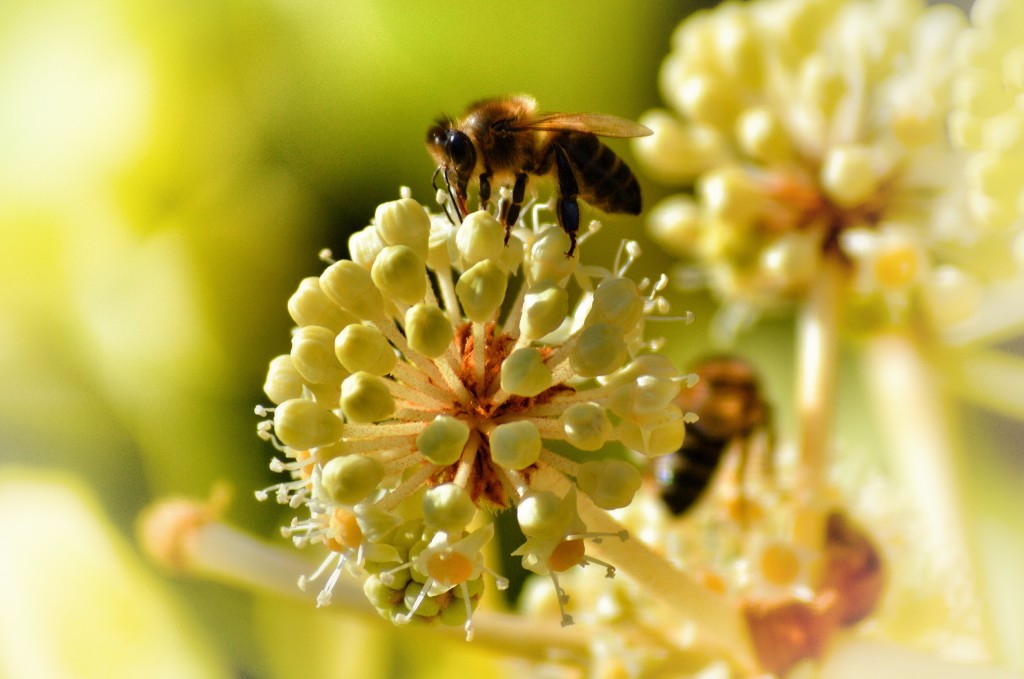 The buzz is gone. If this were a horror film, it’d be “The Silence of the Bees.”
The buzz is gone. If this were a horror film, it’d be “The Silence of the Bees.”
But it’s not a movie. It’s for real. The bee-loud glade, as the poet once called it, is quiet. Except at the Bee Lab at the Entomology Department on the St. Paul campus of the University of Minnesota, where Dr. Marla Spivak’s telephone has been ringing off the hook. Everyone wants to ask her what’s happening to the bees, as a mysterious malady called “colony collapse disorder” wipes out honeybees all over the U.S.
It’s not a trivial problem. The next colony to collapse might be ours. But even if we’re safe from whatever is ailing the honeybees, humans will pay a huge price for losing them.
Bees are big business: According to a story Tuesday in the New York Times about the rapidly “vanishing” honeybee (the story was the top one e-mailed by Times readers yesterday), more than $14 billion in agricultural products rely on bees for pollination. And honeybees are crucial to human health: One of every three mouthfuls of food we consume are dependent on pollination.
In other words, without honeybees, there is no honey. Or almonds or apples or avocados, right on down the alphabet. As bees decline, interest rises, along with worry among beekeepers, scientists and farmers.
“What’s happening to the bees is symbolic of human stewardship of our Earth and our environment,” says Spivak, a professor of apiculture and an expert on honeybee behavior. “We keep going for bigger crops and more money, but we’re not taking care of the bees that we need.”
Possible explanations for colony collapse disorder – in which entire colonies of bees vanish or die – include viral diseases, parasites and the use of pesticides. In addition, drought and increased monoculture farming – the large-scale planting of one crop over thousands of acres – has reduced “bee pasture,” the amount of land where bees find food. A few years ago, an average bee colony produced 100 pounds of honey. That number is now down to about 80 pounds.
Spivak and her colleagues at the U of M are working to breed honeybees that are resistant to parasites and disease and that need less pesticide to protect them from mites. But while long-term solutions are investigated, bees are dying.
Spivak says the bees simply may be stressed beyond their ability to cope, particularly bees kept by commercial keepers and trucked – 400 colonies at a time – across the country to help pollinate crops.
“We don’t know what’s going on,” says Spivak, who notes that most bee colonies kept by hobbyists are doing OK. “But there’s no bee in the world that can tolerate nutritional stress, mite stress and disease stress all at once. We may be asking too much of the honeybee.”
Already, some growers in California have been unable to rent enough honeybees to pollinate their crops. (Each colony, which includes a queen and between 15,000 and 50,000 bees, now rents for about $135.)
In Minnesota, which is one of the top five honey producers, most bees stay closer to home. There are about 100 commercial beekeepers in the state, but thousands of hobbyists who keep bees for honey and the beauty (and pollen) they bring to back-yard gardens and flower beds.
Still, Minnesota is not an island. The disorder that is wiping out colonies in 24 states is a growing concern. Spivak says the U’s Bee Lab has received a record number of registrations for its short course in bee-keeping, March 10 to 12, forcing the lab to cut off registrations for the first time.
(For more on the Bee Lab go to www.extension.umn.edu/honeybees/index.html. )
“Bees are symptomatic of a lot of things humans are messing up,” says Spivak. “It’s very alarming. And I’m very concerned about the fates of the honeybee and beekeepers.
“It’s scary.”
Yes, it’s scary.
And too quiet.
Originally published in the Star Tribune, FEB 28 2007
